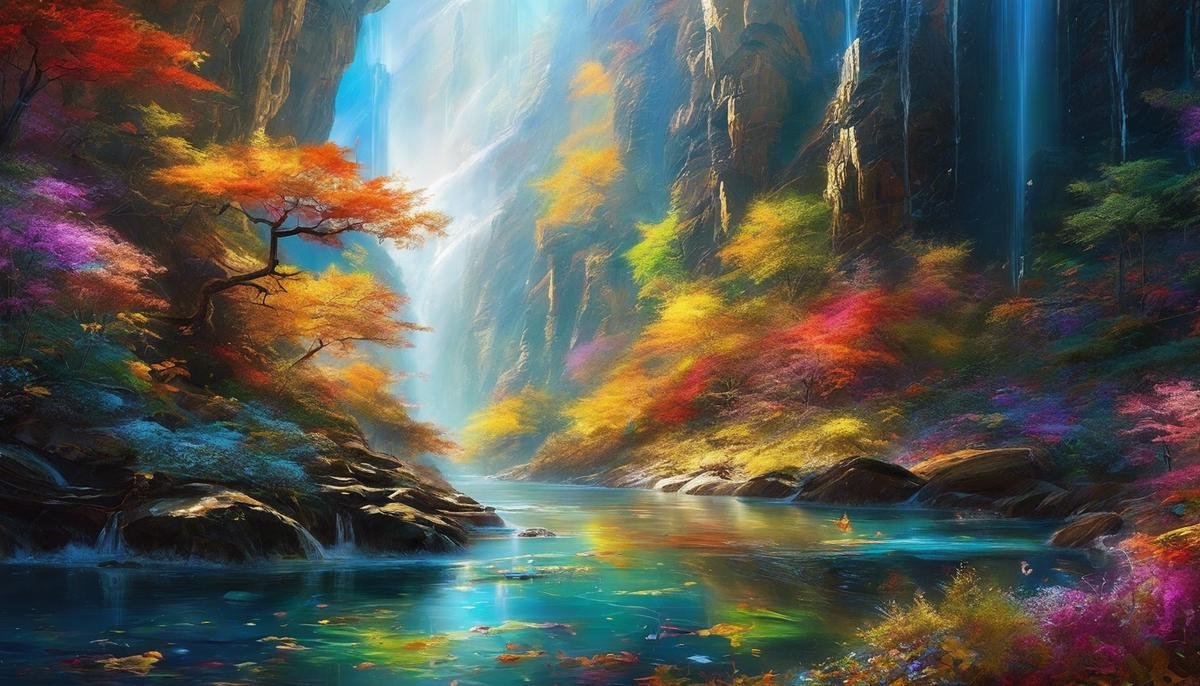The advent of artificial intelligence has undeniably revolutionized the way we create and interact with art, bringing to the fore a myriad of legal, commercial, and ethical quandaries. At the heart of this transformative era is DALL-E, an AI system developed by OpenAI that can generate captivating images from textual descriptions. As the lines between AI-generated content and human creativity continue to blur, it becomes imperative for the general public and creators alike to understand the legal framework underpinning DALL-E’s technology. This essay delves into the intricate tapestry of copyright, licensing terms, and intellectual property rights established by OpenAI, providing a robust foundation for assessing the legitimacy of selling DALL-E generated imagery. Additionally, we unfold the layers of best practices and navigate the complex landscape of commercial use, licensing, attribution requirements, and the burgeoning marketplace for AI-created art, ensuring a comprehensive guide to the monetization of this innovative medium.
Understanding DALL-E and Its Legal Framework
Navigating the Legal Labyrinth of DALL-E Generated Images
In a world where a picture is worth a thousand words, AI-generated images are writing whole encyclopedias. Enter DALL-E, the AI Picasso, transforming the way we create art. It’s hip, hot, and oh-so-smart. But hold your horses, tech aficionados! Before you go selling your DALL-E masterpieces, there are a few legal speed bumps you’ll want to avoid.
First things first: copyright law. Sure, DALL-E’s images are fresh, but who owns them? Not so fast—it’s not just the person who clicked “generate”. OpenAI, the brains behind DALL-E, they’ve got a stake too. But hooray! OpenAI has made it clear you own your personal DALL-E creations. However, reproducing famous art or characters? That’s a no-go zone. Tread carefully—parodies might be cool, but rip-offs are definitely not.
Next on the legal menu: trademarks. DALL-E could whip up an image that accidentally steps on a big brand’s toes. If your DALL-E art includes a swoosh or an apple with a bite out of it, you might get more than you bargained for (hint: legal headaches). Steering clear of trademark trouble is your best bet—keep it original, keep it safe.
And then there’s the right of publicity. Faces sell, but they also sue! If anyone’s mug looks too much like a real person in your AI art, you’d better watch out. Celebrities and everyday Joe’s have rights to their own image, so getting consent is key when a face could make you face the courtroom.
Finally, don’t forget about terms of service—those rules we often click “agree” on without a second thought. OpenAI’s terms are the game rules for selling DALL-E images. They’ve loosened the leash, allowing commercial use, but with a big, bold condition: stay ethical. That means no deceiving, no deepfakes, and absolutely nothing that seems like it came from a sci-fi dystopia.
Wrapping your brain around the legal maze before cashing in on AI-generated art will save you a migraine later. Know your rights, respect others’, and always double-check your DALL-E dealings. Create, sell, but above all, create and sell smart.

Commercial Use of AI-Generated Images
Title: Mastering the Commercial Maze of DALL-E Generated Images
In the fascinating world of AI-generated imagery, DALL-E is no less than a revolution, spurring creators and entrepreneurs to explore fresh vistas of visual content. But with great AI power comes significant legal responsibility, especially when you’re eyeing commercial gains. So, here’s how to navigate the nuances of monetizing DALL-E creations without tripping over legal wires.
First
up, determining the originality of your DALL-E output is crucial. Businesses must ensure that the visuals they plan to commercialize are not just replications of pre-existing works. This means directing DALL-E to produce images that are unique and don’t just imitate well-known pictures.
Next, it’s crucial to delve deep into licensing agreements. Check whether the image falls under royalty-free, rights-managed, or Creative Commons licenses if you’re meshing DALL-E art with other pieces. The licensing dictates usage boundaries and it’s your job to stick to them like tech to silicon.
Commercial use also involves being savvy about image attribution. Crediting isn’t just good manners; sometimes, it’s a legal requirement. When using DALL-E’s images in a product for sale, ensure you’re clear on the need for attributions.
In the realm of smart marketing, pairing your DALL-E images with appropriate descriptions and tags is wise. You want to steer clear of misleading potential customers about the AI-generated nature of the artwork. Transparency isn’t just ethical; it builds trust with your customer base.
Also, consider usage rights for different platforms. If you’re planning to splash your DALL-E art across social media, websites, or marketing materials, check platform-specific rules. Each platform might have its own set of terms dictating how AI-generated images can be used.
Moreover, factor in the scalability of licensing. As your business grows and your use of DALL-E images expands, your licensing needs might change. Keep a pulse on this to avoid future legal headaches.
Lastly, stay informed. Laws and terms of service are not set in stone; they evolve, just like technology. Regularly updating oneself on the latest legal developments regarding AI and creative content is not just a good practice, it’s a necessity for continued commercial success with DALL-E art.
In conclusion, while DALL-E opens up exciting commercial possibilities, navigating its use responsibly requires a blend of technological savvy, legal awareness, and a proactive stance on ethics. Embrace this guide, monetize AI art wisely, and your tech-forward journey into commercial image use will be as clear and sharp as a 4K display.

Licensing and Attribution Requirements
Diving straight in, when you’re looking to sell images created by DALL-E, knowing the ins and outs of licensing and attribution is crucial.
You’ve got your AI-generated masterpiece, now let’s talk about how you can monetize it legally and ethically.
Firstly, recognize that while DALL-E spits out some visually stunning pieces, the generated images are only as legit as your adherence to licensing requirements.
For starters, it’s necessary to ensure you have the rights to sell the artwork. This usually comes down to the licensing agreement between you and OpenAI – the creators of DALL-E. Their licensing policy outlines the do’s and don’ts, so it’s your roadmap to compliance.
Now, attribution may not be mandatory, but it’s definitely a best practice, especially in circles that value creation and originality. If you’re using DALL-E to generate an image that’s based on a prompt or a seed image you input, crediting the AI as a tool helps maintain transparency.
What’s more, customers appreciate knowing about the tech wizardry behind the scenes.
Commercialization of DALL-E images means treating them as you would any other product for sale. So, don’t skip out on standard legalities – when in doubt, consult with legal expertise. And remember, sticking within the ethical guidelines set by OpenAI will not only keep you out of legal hot water but also contribute to an ecosystem of trust as AI art continues to boom.
Finally, as tech swiftly evolves, so do the rules. Keep yourself plugged into updates from OpenAI and changes in copyright laws. Being equipped with the latest info means you’re always ready to pivot, ensuring your DALL-E art venture is both profitable and on the right side of the law.
Stay proactive, stay legal, stay creative.

Marketplace for AI-Created Art
Monetizing AI Artistry: Where to Market DALL-E Creations
In the bustling frontier of artificial intelligence, DALL-E has opened Pandora’s Box for creators and the tech-savvy to forge images that were once confined to the imagination. However, the essential query remains: where can these digital maestros trade their AI-crafted wonders?
Enter the age of digital marketplaces—online platforms where creativity meets commerce. Websites like Etsy and Redbubble offer user-friendly interfaces where creators can set up shop with minimal fuss. These platforms are ideal for those aiming to reach a broad audience while maintaining control over the pricing and rights of their DALL-E masterpieces.
For those seeking a more tailored experience, specialized art platforms such as Saatchi Art or Society6 are the go-to venues. They cater to an audience with an eye for design and a penchant for the unique. Artists benefit from a community that appreciates the innovation that DALL-E brings to the visual arts.
For the more entrepreneurial, setting up a personal online storefront is an avenue worth considering. Utilizing website builders like Shopify or WooCommerce permits a level of customization and brand-building that can be pivotal for those aiming to carve out a distinctive niche in the AI art market.
Let’s not forget the power of social media. Instagram and Pinterest serve as both showcase and marketplace, leveraging the virality factor. By tagging and sharing, creators can attract buyers directly without the middleman, aligning followers with their latest DALL-E creations.
In the fast-paced realm of NFTs (non-fungible tokens), platforms like OpenSea and Rarible are the avant-garde. They offer a blockchain-backed certificate of authenticity, an asset for creators ensuring their customers they’re getting something truly original.
Last but not least, freelancing websites such as Upwork and Fiverr have morphed into hotbeds for custom DALL-E imagery. These platforms connect creators directly with clients needing bespoke solutions, from branding to book covers.
In a world where technology reshapes the artistic landscape day by day, a plethora of platforms await those daring to navigate the digital bazaar with DALL-E’s toolkit in hand. Choose wisely, adhere to regulations, and tap into the global demand for AI-generated artistry.

Pricing Strategies for DALL-E Images
When pricing DALL-E generated artworks, consider the value proposition and the technological marvel it represents.
Start by assessing the input resources: electricity, the subscription or usage fees for DALL-E, and the time spent fine-tuning prompts and selecting outputs.
Assign a monetary value to each input to determine the base cost.
Next, evaluate the artwork’s uniqueness. Even though the DALL-E algorithm generates the piece, human creativity guides the result—this human-AI collaboration marks each piece with a distinct fingerprint.
If your piece is one-of-a-kind, it warrants a higher price tag.
Add value through storytelling and presentation. Buyers don’t just purchase a digital image; they buy an experience, an idea.
Craft a narrative around your artwork. What inspired it? What does it signify?
Such details can enhance perceived value and justify higher pricing.
Factor in the perceived value of digital art in the current market. Research prices of comparable AI-generated artworks and position your piece within this spectrum.
Don’t undervalue your work; respect the novel nature of AI art and price accordingly.
Finally, consider dynamic pricing models. Just as ride-sharing apps adjust prices based on demand, you might use similar strategies.
Initially set prices based on production costs and market rates, then adjust according to the popularity and demand of your artworks.
The digital art ecosystem is dynamic. Monitor the pulse of the market and pivot your pricing strategies as needed.
Always remain compliant with the legal frameworks governing AI-generated content to ensure your creative venture thrives on solid ground.

Future Implications and Ethical Considerations
As technology enthusiasts, it is paramount to address the impact that AI-generated art, particularly those created by systems like DALL-E, will have on the art world and our perceptions of creativity.
Selling DALL-E art is not just a transaction; it’s a step into a future where the lines between human and machine-generated content are blurred.
This leads us to delve into the future implications and ethical considerations that come with this groundbreaking technology.
One cannot ignore the recent surge in the use of AI in creative industries.
AI-generated art is coming to the fore, promising a revolution in how art is produced, owned, and monetized.
With DALL-E, the power to create is now augmented by algorithms, raising questions about authenticity and the value of “human-made” versus “machine-made” art.
As art connoisseurs of the digital age, it’s crucial to ask: What implications does this have for the future of art?
The introduction of AI art into the market might saturate the space with content, which spells out a potential shift in supply and demand dynamics.
Will the abundance of machine-generated art lower the value of all art, or will it create a new niche for uniquely human-created works?
It’s a pivotal moment for artists and buyers alike to think about where they place value.
Moreover, the ethical considerations cannot be overlooked.
It is essential to discuss how DALL-E art is curated.
The input data that feeds the AI, could it be sourcing from the works of existing artists without credit?
What does this say about the respect for original creation and compensation?
Artists who may inadvertently find their styles mimicked by AI algorithms need to navigate this terrain with eyes wide open, staying vigilant about protecting their intellectual property.
Then there’s the question of accountability.
What happens if AI-generated content triggers a negative emotional response or worse, is used for malicious purposes?
Pinning responsibility on a machine isn’t as clear-cut as dealing with a human creator.
Hence, as we tread into these waters, being mindful of the implications of sharing and selling AI-generated content becomes not just about compliance but about moral responsibility.
The art world has always adapted, evolving to accommodate new media and methods.
As enthusiasts riding the cutting edge of technology, we anticipate similar trends but prepare to navigate them with the integrity that art, in all its forms, deserves.
This approach anchors our participation in this new wave as we explore the limits of computational creativity, ensuring that innovation does not overstep the bounds of ethical artistry.
The discussion around AI-generated art and platforms like DALL-E is ongoing.
The technology frontier is ever-expanding, and staying ahead means continuously revisiting and reassessing the balance between innovation and responsibility.
Embracing new technology while honoring the principles of artistry will be the fulcrum upon which the future of AI in the creative domain will tilt.

Photo by googledeepmind on Unsplash
As we look ahead, it is clear that the intersection of art and artificial intelligence will continue to spark dynamic changes across the creative landscape. The discussions and analyses presented in this essay aim not only to arm individuals and businesses with the knowledge to ethically and legally engage in the commerce of DALL-E generated images but also to provoke thoughtful consideration of the larger impact on artistic expression. The evolving technological capabilities of AI like DALL-E present both unparalleled opportunities and profound challenges, urging us to continually reassess our definitions of creativity, ownership, and value in an increasingly digital frontier. As the trajectory of AI-generated artistry forges ahead, we stand on the cusp of a new era that promises to redefine the canvas of human ingenuity.



